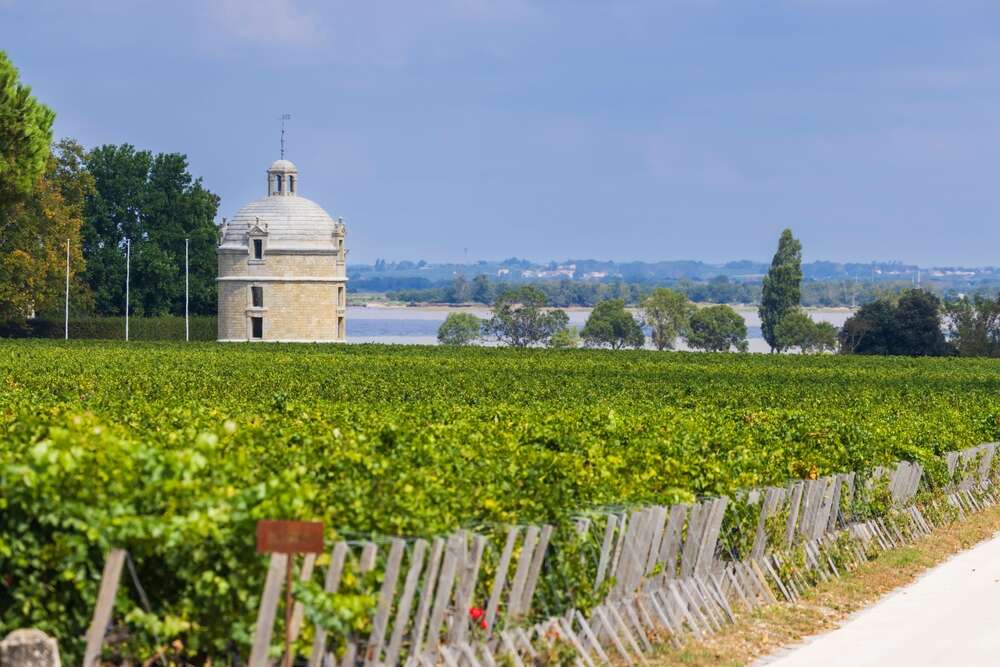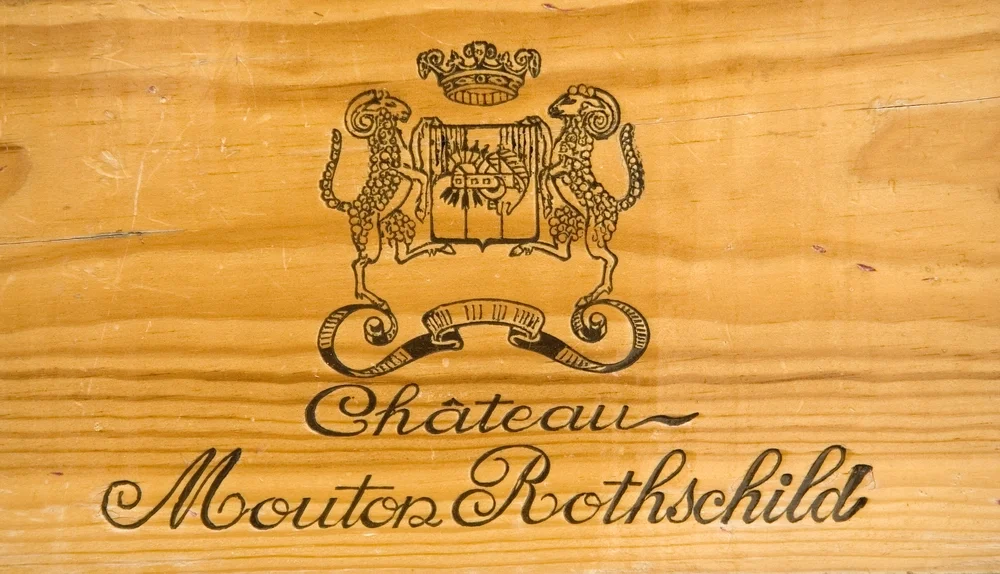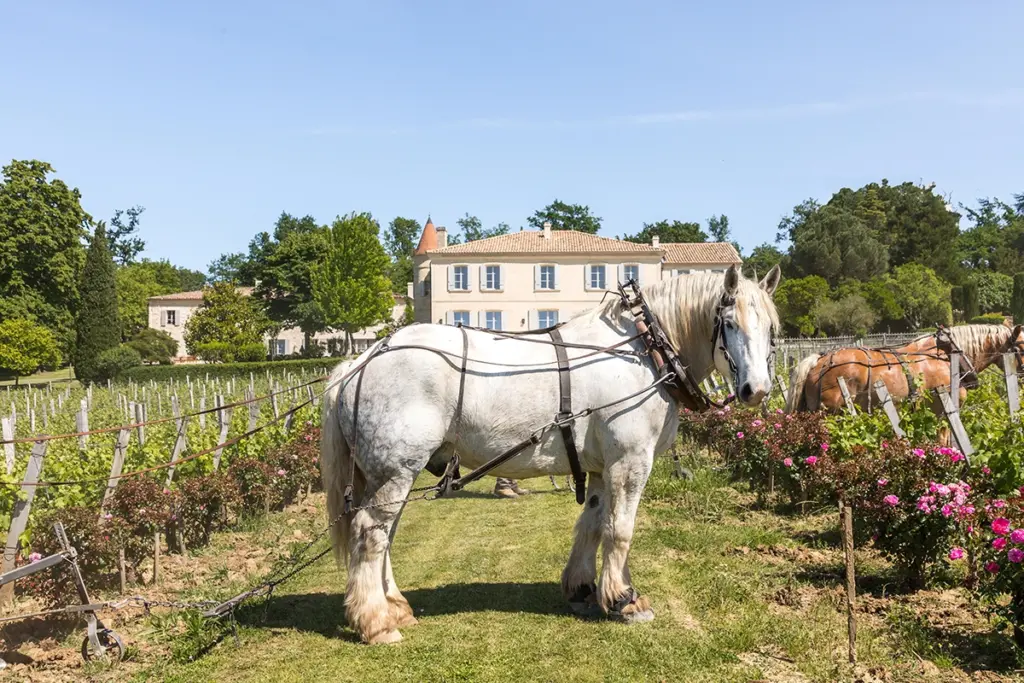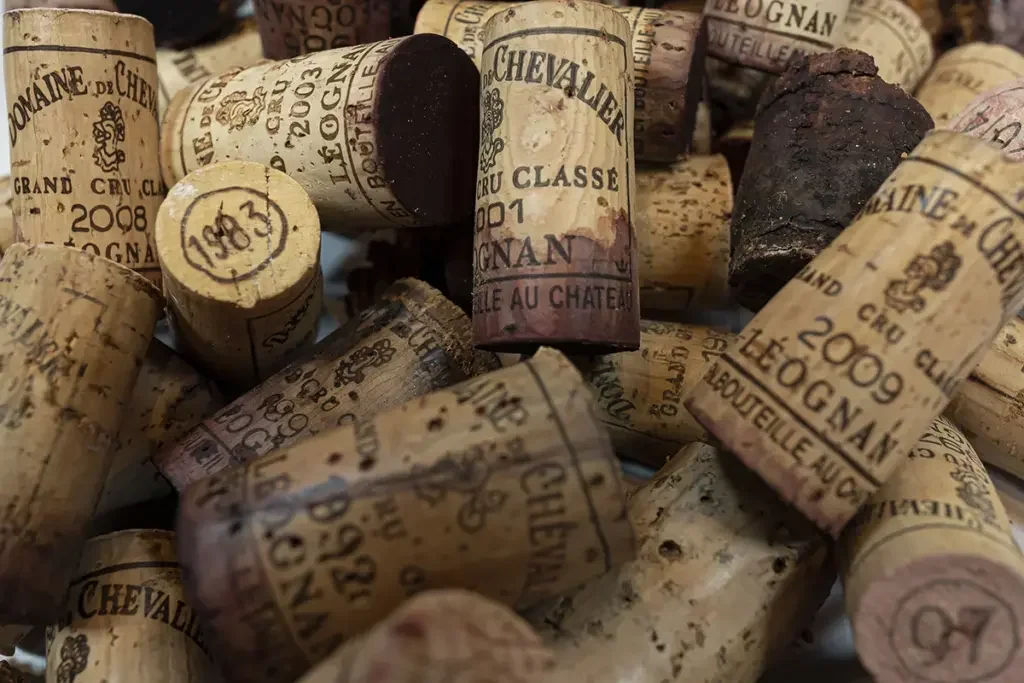
Over the past year, The World of Fine Wine has published hundreds of our writers’ notes and scores on Bordeaux. Here we pick out some of the most notable and admired bottles that appeared in print and online in 2023.
Bordeaux 2022: Something new under the sun—Catch 22
Simon Field MW spent three-and-a-half weeks in Bordeaux in the spring tasting the latest vintage en primeur. It was safe to say he was impressed by the quality of the 2022s, if, like many other commentators and producers, rather puzzled by the wines’ essential freshness despite growing conditions that were characterized by extreme heat.
“Energy, vibrancy, and harmony are encountered with near uniform regularity in the wines. Ripe purity and generous discretion need not be oxymoronic concepts, certainly not in 2022,” Field said. “When it comes to identifying the most successful communes, one is also faced with a dilemma, in that they were all good in their own way. Overall, maybe (but with so many exceptions that it almost invalidates the generalization), St-Emilion, especially where Cabernet Franc was involved, impressed just as much as Pomerol, which is unusual; Graves and Pessac were, enfin, a little less beguiling than the wines of the Médoc, its hail-ravaged northern enclaves excepted. Elsewhere, superlatives flow: I was particularly taken by what I describe as the “charming austerity” of the best from St-Estèphe, and by the aromatic authority on display in St-Julien. Margaux, the largest of the four central Médoc communes, was, understandably, a little more variable, but the best are very good indeed. I was bouleversé by the quality of the top Pauillacs. Latour (which hasn’t been offered en primeur for several years now) was my favorite of all from the Left Bank, but proxime accessit must come the outstanding Pichon Baron, less muscular than of old and all the better for it, and the rejuvenated Léoville Barton, putting its new winery to good use from the off. On the Right Bank, Conseillante, Petrus, Cheval Blanc, and Figeac were all outstanding, with Troplong Mondot and Vieux Château Certan also worthy of special mention. All of these wines will, needless to say, keep for several decades.”
Château Latour 1er Cru
(92.45% CS, 7.4% M, 0.15% PV)
Simon Field MW | As if the vintage had not thrown up enough by way of enigma, here we have a Latour that appears at first blush to be leaner of structure than its junior sibling, and yet that, with aeration, metamorphosizes into something with far more concentration and intensity of flavor. The nose boasts blackberry, cassis, slate, camphor, and woodsmoke; then the palate redoubles on each of these and dresses them up with the most beguiling of tannic structures; a powdery yet muscular backdrop, with familiar descriptors of iron, menthol, and sandalwood all entering the fray. Dexterous and lively, too, the wine has benefited from a near-perfect growing season, the key episode of which, according to Hélène, was the 4 inches (105mm) of rain in June, its timing primed to ensure that the technological and phenological maturity achieved thereafter a perfect coincidence, with the small berries failing to sacrifice too much acidity while at the same time accumulating color and tannins in a ratio that it was easy to exploit with a careful extraction regime in the winery. 98-99
Château Cheval Blanc
(53% M, 46% CF, 1% CS)
As many as 41 of the property’s 54 plots were called to arms in 2022; technical director Pierre-Olivier Clouet is clearly a fan of blending: “Blending is like a Sunday family lunch,” he says, quoting Emmanuel Reynaud. Before tasting the final cut, we taste the key components; the Merlot is imperious and plush, while the Cabernet Franc offers backbone and grip. The final blend is thus parsed before our eyes, the assemblageadding a striking aromatic uplift, a floral tribute, and, by way of alchemy, an illusion of sweetness. Mint and chocolate underscore the ripe plum-fest, scorched earth and a hint of tapenade lending gravitas. The tannins exude a quiet authority, and the finish is suitably uplifting. Job done, brilliantly. 98–99
1982 Château Mouton Rothschild: Curtain up on the modern wine world
Andrew Jefford was inspired by a single bottle of Château Mouton Rothschild from a watershed vintage for Bordeaux.
“I was there, as a modest novice consumer, spending a little money and finding a lot of joy in its wake. My friends and I wolfed our ’82s too soon, but no matter; we now understood pleasure in red wine. We now knew how enticing it smelled and what gratifying maneuvers it performed in our mouths. We felt its soft glow in our innards as we sank back into night’s arms. And—of course—this vintage in Bordeaux lingered, moving forward in time like a leading actor or actress: embodying the passing of the years in its own changing physical form but always memorably, scattering insight and understanding as it did so. From time to time, most of us got to see 1982 perform on stage thanks to some friend’s kindness. It would enter from the wings unfussily enough, easy of gesture and unstridently vocal. As the play of dinner unfolded, though, it would command attention, hush, gaze.”
Latour was a little paler than Mouton in color—but darker in aroma. Both these Pauillacs had a seamless harmony, of course, but there was more firm black fruit hidden away in the Latour, faintly smoke-twined, settled, and wise. It had more palpable tannin, too, than the Mouton, with more evident acidity. It was complete, even pristine for such a mature wine. Of the two, it would probably be the one to keep for longer should you be so endowed and so minded. I’m not so endowed, nor would I be so minded; everything about it was graceful and expressive, measured and well proportioned, but nothing needed further unpacking. It promised no more hidden mysteries, and it would be a shame to see the flesh shrink from emergent bones. This was its memorial day. As it had been, when paint met canvas, for Wolmark’s model.

Château Troplong Mondot 1983–2022: Evolution and revolution
Château Troplong Mondot has been through three distinct stylistic phases over the past 40 years, according to Elin McCoy, who added notes from a recent tasting of the youngest vintages to those from a 2019 retrospective in New York City to give her a complete overview of the St-Emilion estate’s progress.
“The vintages from four decades in the New York tasting illustrated not just the estate’s changes in winemaking philosophy but also the impact of climate change in Bordeaux,” McCoy said. “What struck me most was the dramatic difference in ABV levels—from 12.5% in 1986, to 16% in 2010—and the way the wines fell into three distinct styles. The new direction under de Gironde is a huge success. Better-balanced wines, with purity, sophistication, seamless textures, and wonderful lift and freshness are the result.”
2005 Troplong Mondot
(90% Merlot, 5% Cabernet Sauvignon, 5% Cabernet Franc; 14.5% ABV)
This is one of my favorite 21st-century Bordeaux vintages, a year when winemakers said that it was so easy to make a good wine that if you didn’t, you should find a new profession. Everything is in balance in this Troplong Mondot, with its complexity on full display. The nose exudes aromas of licorice, dark plum, earth, and more. The flavors of damp earth, dark chocolate, and warm leather are generous and spreading, though there is still a bit of tannin on the finish. | 95+
2022 Troplong Mondot (barrel sample)(85% Merlot, 13% Cabernet Sauvignon, 2% Cabernet Franc; 15% ABV)
Wow! The words that define this barrel sample for me are intense, succulent, vivid, multidimensional, seamless, silky textured, concentrated, and supple. It’s full-bodied and a bit exotic, with the taste of dark berries and a chalky, saline minerality that shouts terroir. All the work that has been done in the vineyard is on show. The freshness stands out despite the alcohol. | 97

Domaine de Chevalier anniversary auction 1983–2022: Knights in red satin
Simon Field MW was privileged to attend the meticulous recorking preparations for a landmark auction at Christie’s London, on November 30 to mark Olivier Bernard’s four decades at Domaine de Chevalier and to taste the 40 wines that will be offered then in a unique double-magnum superlot.
“It is quite an exercise all in all, especially given the scale of the operation and the large formats in play,” Field said. “They are, if you will pardon the list: 18 liter (Melchior) for 1987, 1988, 1989, 1990; 15 liter (Nebuchadnezzar) for 2000; 12 liter (Balthazar) for 1991, and 6 liter (Impériale) for 1992, 1993, 1995, 1996, 2003, 2006, 2007, and 2015. The other vintages are already available in the double-magnum format. Olivier has decided that, for many reasons, this format is the optimum size for this purpose; he seeks consistency and longevity in every vintage. New Diam closures have been bought, and the cellar master is on hand with his pipette to add a little liquid sulfur dioxide. Olivier then tops up from carafe with a modest drop of 2006 or 2008. “This carafe is usually for le service,” he jokes; this time the gratification is to be deferred for posterity. “Before 2005, there were very few larger formats anywhere in Bordeaux,” he advises. Domaine de Chevalier, fortunately, has maintained a relatively healthy library for days such as these. And a very special day it is, too. There is a wonderful atmosphere—familial, dignified, respectful, and proud. Forty years of excellence from one of Bordeaux’s greatest ambassadors. Bravo!”
1985 Domaine de Chevalier (65% CS, 30% M, 5% CF)
Fantastically allusive; black tea and gunpowder come to mind. An imperious tannic grip, velvety and plush, the acidity bearing up well. Quintessential Chevalier, built to last, with Palladian elegance and careful understatement juxtaposed.
2005 Domaine de Chevalier (65% CS, 30% M, 3% PV, 2% CF)
Boasting all the complexity and potential that one would hope for from this fantastic year. An intense inky core and equally intense aromatics of forest floor, blue and red fruit, then hints of cardamom, fig, and laurel. Power patient in the wings; the tannins silky yet authoritative, the acidity suitably linear. On the up (and up). One of the most impressive wines of the tasting.

2019 Bordeaux: The reds remain magnificent
“The apotheosis of Bordeaux’s recent, climate-warmed golden run? Glorious wines in all styles: red, dry white, sweet white.” Returning to the 2019 vintage, Michael Schuster added a caveat to that summary from his en primeur report, but after extensive in-bottle tastings shared with Andrew Jefford and Simon Field MW for WFW82, his enthusiasm for the red wines was undiminished.
“There is so much to enjoy from 2019 reds including, especially, the more modest wines, that I urge you to try as many as you can wherever, whenever you can, loading up with what you can afford,” Schuster said. “You will not regret it. I also noted, while tasting, what a privilege it was to taste this magnificent range of wines in their mostly very impressive, often fragrantly beautiful, youth. And perhaps a bit more wistfully, that I already envied those who, most probably unlike me, will be able to enjoy them in glorious full maturity.”
Château Lafleur (15% ABV) | 98
Andrew Jefford | Super-deep, dark, black-red. Sweet, warm, ample, with both cereal and fruit notes. Richly plummy, almost tiptoeing out toward fig, and a very clear contrast to the much more fresh-fruited Pensées; this is deep, spicy, incense-laden, and Byzantine—and hugely alluring in that style, with all the carnival strangeness and exoticism that might go with the notion of Byzantine. Profoundly aromatic on the palate as well as in the aromas; deep and driving; gloriously and resonantly ripe; structured, taut, long, almost driving, a core of fruit that will take a decade and a half to resolve. Almost salty at the edges; almost essence-like. It is more vivid and vigorous than La Fleur-Pétrus, but not quite as broad and ample, not as amply ballasted; maybe it will last longer and be more noble, but for the time being it is not quite as sensually alluring. It also doesn’t evolve in the glass quite as well … but these are very early days. 2025–55. | 96
Michael Schuster | Dense, relatively closed, less obviously perfumed and subtle than the Pensées at the moment, but packed with promise; rich, concentrated, vital in acidity, very finely firm in tannin; both delicate and powerful, those classic Burgundian proportions; intense, penetrating flavor, yet so subtle for all its intensity, racing in energy, endlessly attention-gripping across the palate, such a complete and discreet wine at the same time; a striking length of both flavor and finish, where it is mouthcoating and subtly spicy. A wonderfully persistent, ripe wild-strawberries fragrance on the finish, alongside the subtle minerality. As complete as it is possible to be? Extraordinary wine. If you are so lucky as to have some, leave 15 years at least. And then a generation. Or two? An “on-bendedknee“ Bordeaux? 2039–60+. | 99






